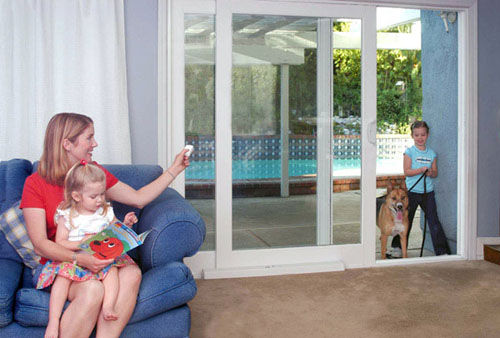
1.What is relling code(sometimes called hopping code)?
A rolling code (or sometimes called a hopping code) is used in keyless entry systems to prevent replay attacks (Where an eavesdropper records the transmission and replays it at a later time to cause the receiver to 'unlock'.)
Such systems are typical in garage door openers and keyless car entry systems. The most widely spread algorithm for code hopping systems today is KeeLoq.
2.what is keeloq
KeeLoq is a proprietary hardware-dedicated NLFSR-based block cipher. It was designed by an unknown engineer at Nanoteq Pty Ltd (South Africa) in the mid 80's and sold to Microchip Technology Inc in 1995 for $10 mln (Form:10-K reference). It's used in "code hopping" encoders and decoders such as NTQ105/106/115/125D/129D and HCS101/2XX/3XX/4XX/5XX. KeeLoq is used in the majority of RKE (remote keyless entry) systems by such companies as Chrysler, Daewoo, Fiat, GM, Honda, Toyota, Volvo, VW, Clifford, Shurlok, Jaguar, etc.
KeeLoq "code hopping" encoders encrypt a 0-filled 32-bit block with KeeLoq cipher to produce a 32-bit "hopping code". A 32-bit IV is linearly added (XORed) to the least significant 32 bits of the key prior to encryption or decryption.
KeeLoq cipher accepts 64-bit keys and encrypts 32-bit blocks by executing its single-bit NLFSR for 528 rounds. The NLFSR feedback function is 0x3A5C742E. It uses bits 2, 9, 20, 26 and 31 of the NLFSR state as its inputs during encryption and bits 1, 8, 19, 25 and 30 during decryption. Its output is linearly combined (XORed) with one of the bits of the NLFSR state (bit 0 on encryption and bit 31 on decryption) and with a key bit (bit 0 of the key state on encryption and bit 15 of the key state on decryption) and is fed back into the NLFSR state on every round.
3.Security
There is no published cryptanalysis of the cipher. Individual "code hopping" implementations are often vulnerable to a replay attak exploited by jamming the channel while intercepting the code, since code hopping is done by incrementing the IV on each use instead of using the current time. It made KeeLoq "code grabbers" quite popular among most car thieves, although some of them use FPGA-based devices to break KeeLoq keys by brute force within about two weeks thanks to the short key length.
External links

As to the Remote Control Products ,Please refer to our RF department. |


